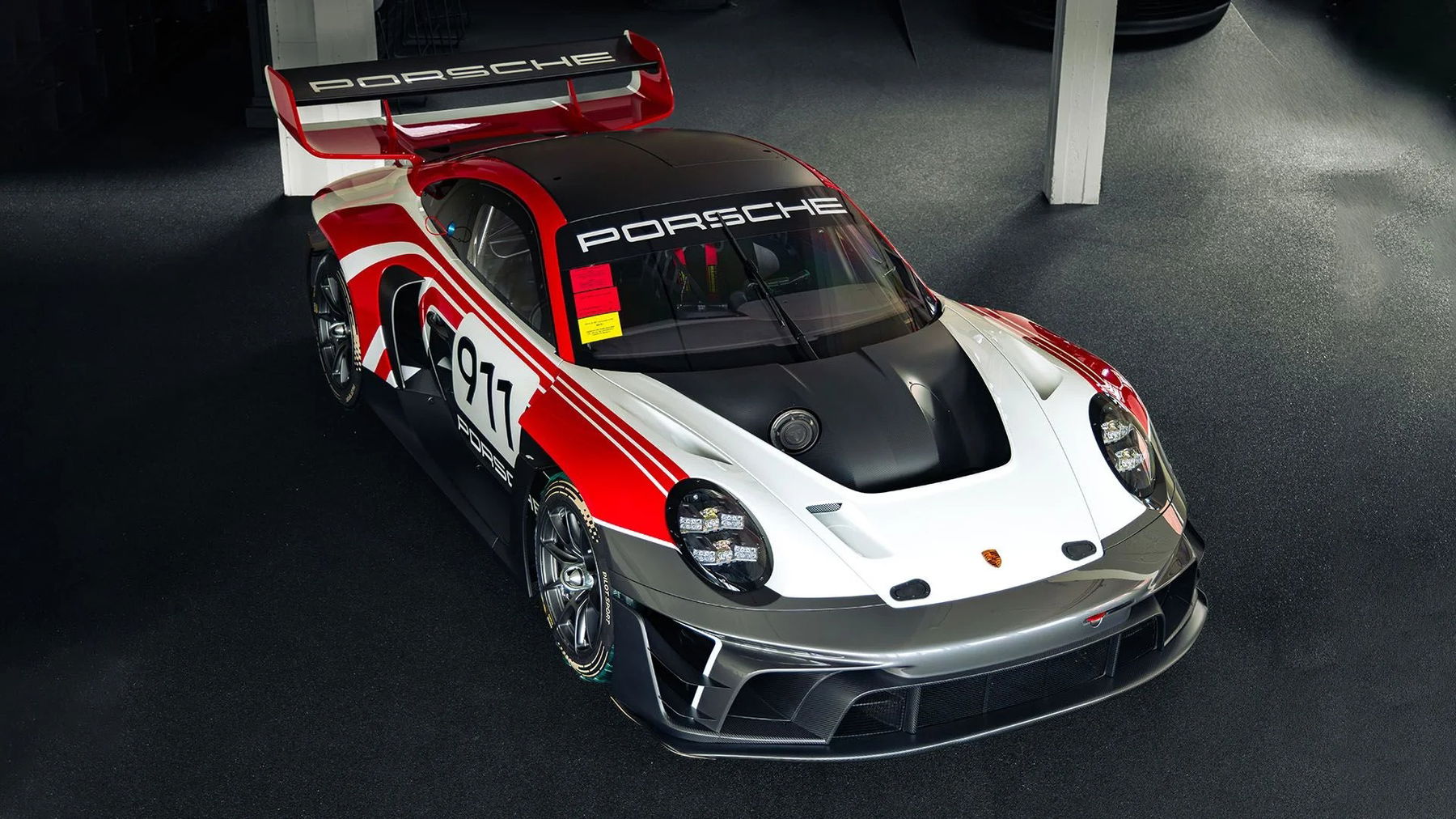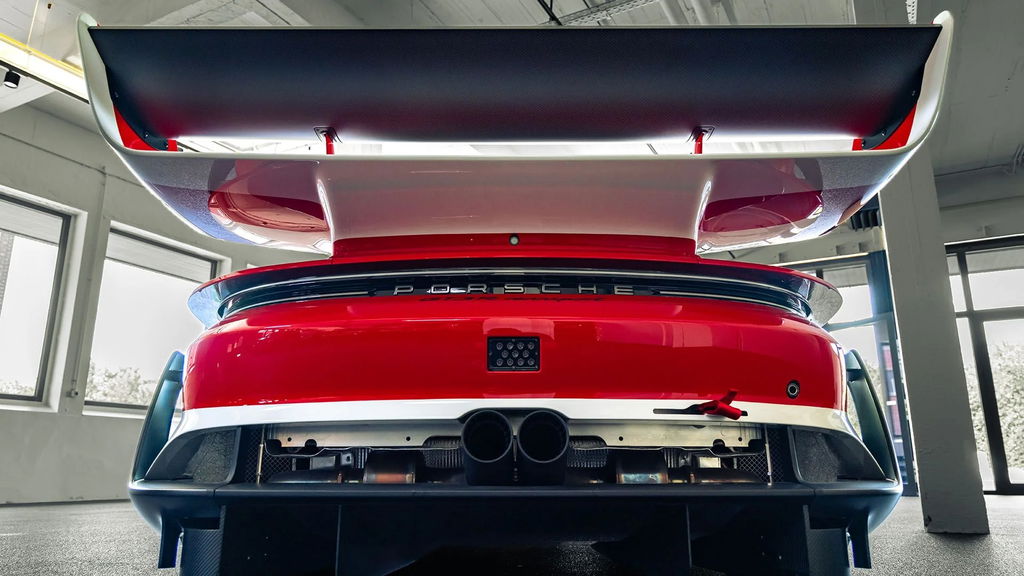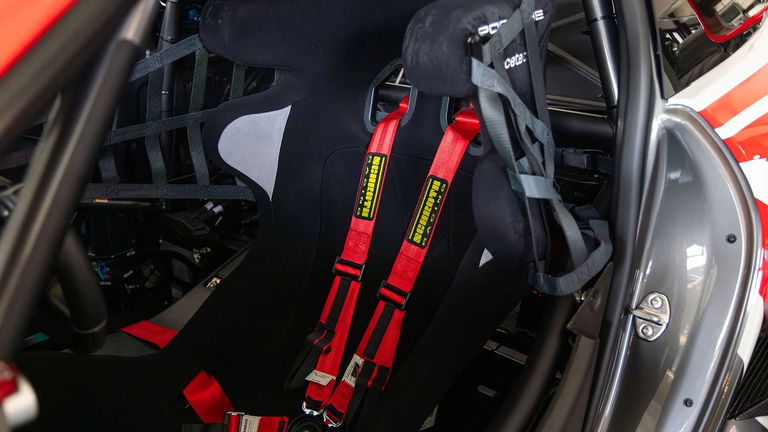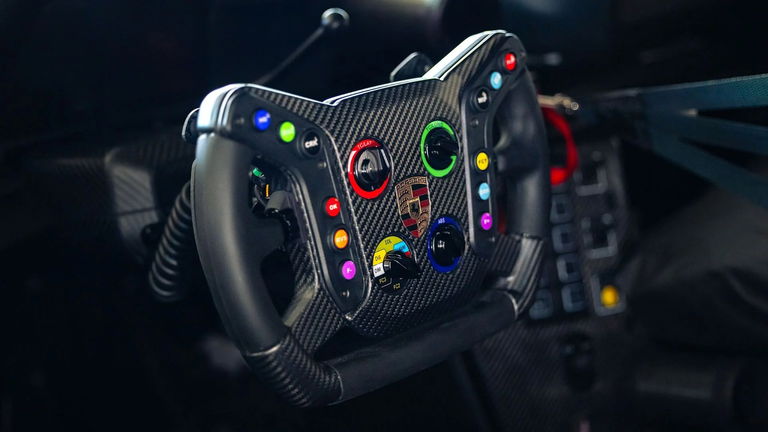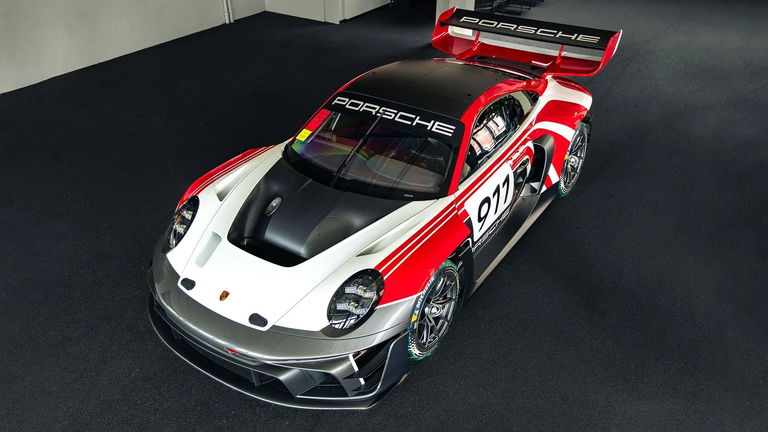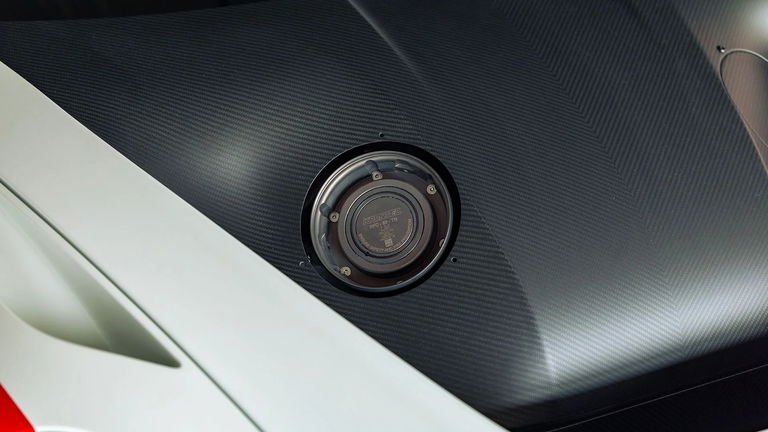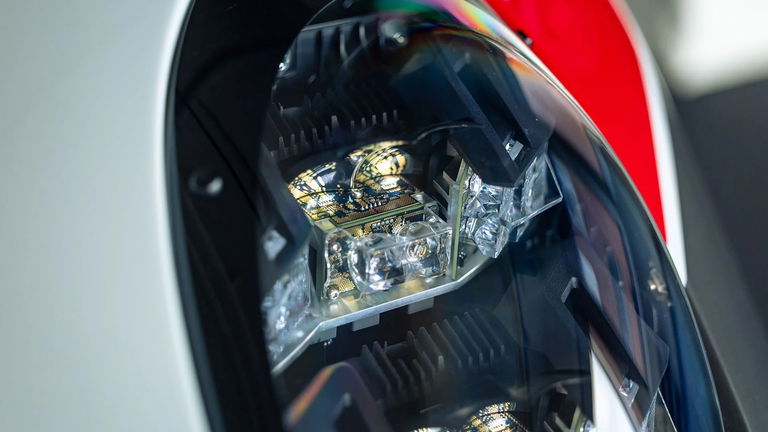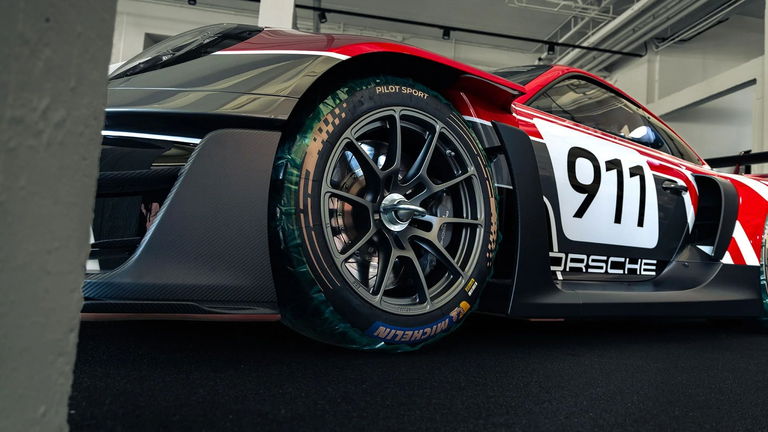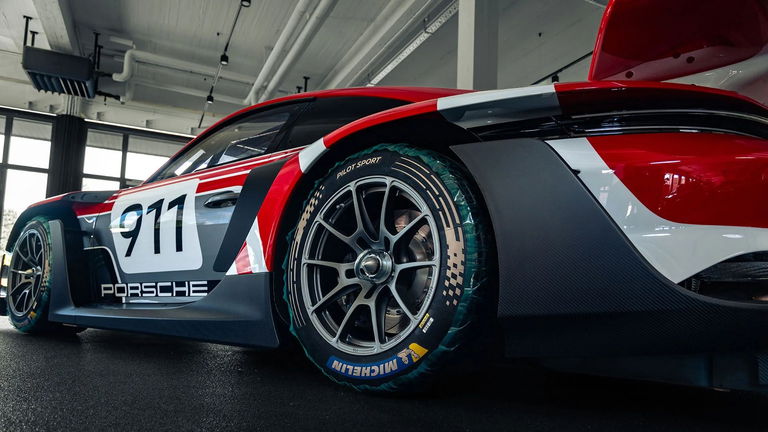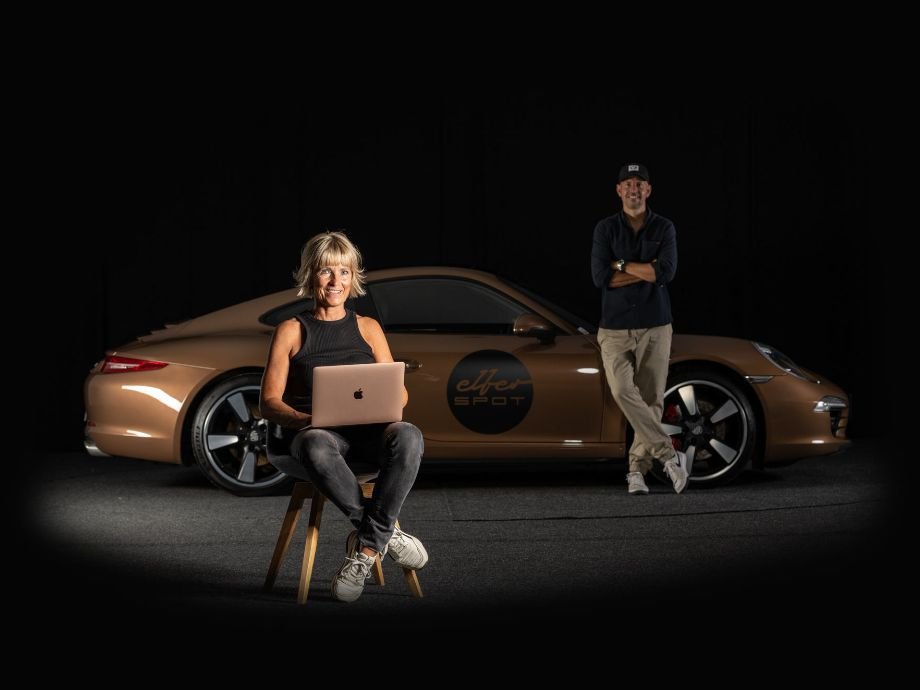Chassis No. WP0ZZZ99ZRS277037
GT3 R rennsport No. 37/77
Few gatherings in the automotive world capture the imagination of enthusiasts quite like Rennsport Reunion, Porsche’s festival of motorsport history. Held at California’s Laguna Seca since the fourth edition, it has become the stage for some of Porsche’s boldest debuts. At Rennsport Reunion VI in 2018, Porsche stunned the world with the unveiling of the modern 935—a 77-unit, track-only homage to the flame-spitting Group 5 monster of the 1970s. Known internally as “Project Flatnose,” it recalled the outrageous proportions of the 935/78 “Moby Dick,” yet wrapped them around the chassis of the 911 (991.2) GT2 RS Clubsport. It was a birthday present for Porsche’s 70th anniversary and signaled a return to limited-edition track cars designed outside the constraints of homologation.
Five years later, Porsche returned to Laguna Seca for Rennsport Reunion VII with another extraordinary creation: the 911 GT3 R rennsport. If the 935 was a tribute to turbocharged spectacle, the rennsport explores purity. The rennsport offers what Thomas Laudenbach, Vice President of Porsche Motorsport, calls “the experience of driving a 911-based racing car in what is probably the most primal form.” Limited to just 77 examples it is Porsche’s latest demonstration of what happens when engineers and designers are freed from the rulebook.
The GT3 R rennsport is based on the 992-generation 911 GT3 R, the factory-built race car competing in GT3 series worldwide. But where the standard GT3 R is bound by FIA regulations governing weight, aerodynamics, and power, the rennsport special dispenses with them entirely. Its concept, Porsche notes, is “beyond any technical regulations or racing series.” The result is a machine conceived not to meet a homologation checklist, but to thrill its driver.
The design is the work of Style Porsche’s Grant Larson and Thorsten Klein. Larson, responsible for many Porsche icons, and Klein, a creative force behind modern one-offs, approached the rennsport with a dual aim: to maximize the proportions of a modern race car while embedding references to Porsche’s past. Its roofline and hood reveal kinship with the GT3 R, but every other panel is unique. The stance is low and wide, the surfaces stretched taut over muscular haunches.
The most striking element is the vast rear wing. Inspired by the Martini Racing Porsche 935s that conquered Group 5 in the mid-to-late 1970s, it rises from the tail with theatrical presence. Its downforce is so prodigious that additional supports were required. Below, a full-width LED strip illuminates the Porsche script, while digital side mirrors replace conventional glass, relaying images to cockpit screens.
Inside, the rennsport is uncompromising. The single-seat cabin is designed purely for driving, with a fixed bucket, six-point harness, FIA roll cage, and Race-Tex upholstery across a minimalist dashboard. Safety nets, a roof rescue hatch, and a 117-liter fuel cell remind its occupants that it is, at its core, a racing machine.
Beneath the carbon skin lies a masterpiece of natural aspiration. The 4.2-liter flat-six, derived from the GT3 R, is fitted with Rennsport-specific pistons and camshafts, a higher compression ratio, and unique mapping. Without intake restrictors, output climbs to 620 PS at 9,400 rpm. The response is sharpened by a single-mass flywheel, carbon intake, and six throttle butterflies. Power is sent to the rear wheels through a six-speed constant-mesh sequential gearbox, complete with an electrohydraulic clutch actuator and Rennsport-exclusive performance upshift. With a target curb weight of 1,240 kilograms in unpainted form, the Rennsport achieves an extraordinary two kilograms per PS power-to-weight ratio.
The chassis mirrors the proven setup of the GT3 R but is tuned for additional power and rennsport-specific aero kit. A double-wishbone front suspension and enhanced multilink rear, both with five-way adjustable dampers and anti-roll bars, deliver precision. Michelin-developed rennsport-specific racing tires are mounted on single-piece forged BBS aluminum wheels—12.5 inches wide at the front, 13.0 at the rear. Braking is by aluminum monobloc calipers—six-piston front, four-piston rear—clamping ventilated, grooved steel discs. Rennsport-specific pads with titanium backplates reduce unsprung mass, while Bosch Race ABS ensures consistency and confidence.
As with the 2019 935, exclusivity is central to the GT3 R rennsport’s appeal. Just 77 were built, each available with personalization options. The baseline “body-in-white” was finished in Agate Grey Metallic with exposed carbon, but customers were also offered three optional, exclusive painted designs for €123.000 in tribute to Rennsport Reunion, Flacht, and Speed Icons. Additionally, harness belts could be ordered in Rennsport-specific colors—red, blue, or yellow—for further customization.
For fans of Porsche, the appeal of the 911 GT3 R rennsport transcends mere figures. This particular example, limitation number 37, was ordered directly from Porsche by the consignor with both options selected. For an additional €123.000, the Exclusive “Flacht Design” livery in classic Porsche Motorsport red and white was chosen to grace the new 911’s muscular carbon fiber bodywork. In addition, red harnesses were chosen to complement the exterior color scheme. Since its handover, this motorsport special has remained housed in a collection in an “as delivered” state. It retains a number of original delivery items and digital purchase information and is offered with test and delivery kilometers registered on its digital race dash.
The GT3 R rennsport is a celebration of design and engineering freed from restriction, a visceral connection to Porsche’s motorsport soul, and a sure-fire instant classic. Like the 935 that came before it, it is a gift to Porsche and motorsport enthusiasts, a collectible of rare purity, and above all, a car that delivers the primal thrill of motorsport in its most unfiltered form as a jewel in Porsche’s lineage of limited-run track specials.
Continue reading
